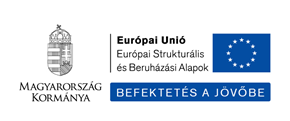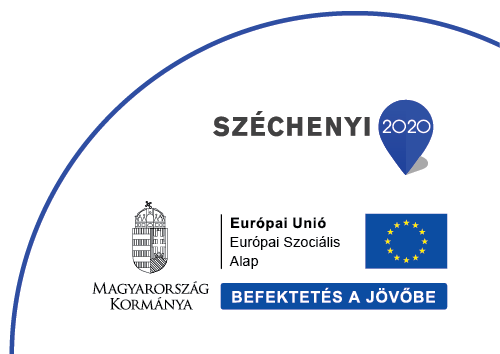




Project identifier:
GINOP-2.2.1-15-2017-00073Name of the project:
Design and testing of a framework that supports the sustainable implementation of telemedicine-based forms of carePartners of the consortium:
- Tigra Ltd. (consortium leader)
- University of Óbuda
- University of Szeged
- iCollWare Ltd.
- Di-Care Egészségügyi Kereskedelmi és Szolgáltató Zrt.
Professional leader:
Dr. habil. Kozlovszky MiklósDuration of the project:
07.01.2017-06.30.2020Amount of the support:
73,9863%Project content introduction:
Our purpose is to research and improve an inspection center of healthcare integrated with telemedicine, to accomplish a pilot with 5000+ members, to create telemedicine services based on an application group that is built on a further developing Inclouded platform. Another purpose of the platform is to integrate the existing professional and technologic systems (EESZT, MENTA). Our industrial partners (Tigra Kft, Di-Care Zrt., iCollWare Kft.) are developing relevant applications and a center for telemedicine services based on this platform. During the project, the two universities cooperating with professional partners are forming a telemedicine methodology group, which is supporting the production of telemedicine services by collecting practical knowledge. It’s focusing on: a pilot built on existing solutions, organizing the project by collecting experience, researching an existing operative and financial model, development of a native telemedicine operative model, (provision level, professional support, replacing provision process, useable device of a sustainability model), developing an IT framework, adapting national standards to the native environment, researching ethical and legal environment. By the exploration of these areas and with the help of the Inclouded architecture, it supports the industrial partners to enable leading-in an HW/SW solution based telemedicine service on the market. The service created in the project (technical system and regulation) will also be able to support the telemedicine services in the future by the ÁEEK. The group is cooperating with the professional workshops and organizations: ÁEEK, NISZ, and is according to the countrywide strategical purposes of „e-healthcare and Big data/data analytics and strategical analysis R&D workshop”. Among the above tasks the University of Óbuda deals significantly with the following ones:9. Task (experimental development) /9M: 8-16/
Developing device driver modules
With the support of a presently functioning hardware adaptation layer, developing a multifunctional, effective, reliable and easy to integrate device managing layer, which is capable of solving the interoperability problems between the different platforms (smartphone/tablet) and also between the different versions of a given platform, by increasing of the number of integrated devices (manufacturer, device types, sensor types), and with the expansion of the functionality of the device driver module. Throughout the device management layers it’s possible to connect the sensors monitoring the physiologic data of the users. A unified communication service evolves, by which these information can be linked to outside systems. Result: a software solution, that is capable to provide a unified device driver surface for multiple platform for physiological parameter monitoring sensors that are used in healthcare and in civil sphere + documentation.10. Task (industrial research) /6M: 1-6/
Researching optimal parameters and functionalities of a virtual medical center
The purpose of this task is to enlist the consultations that don’t require physical visits. Identification of the legal aspects of virtual meetings: planning the patients database maintenance as per service provider roles, paying special attention to the proper control and corresponding data security conditions with respect to the roles requiring a doctor degree. Its further purpose is to plan user-friendly medical and user-friendly patient-processes and functions, as well as master data management functions and privilege management functions. The virtual medical center doesn’t do synchronized monitor-evaluation, it doesn’t have an inspective function. The patient management support connected to the telemedicine measurements,-signal processing,-decision support content is the domain of tasks 1-3. The virtual medical center is the part, which remains as an individual medical role even after building in software supported automatisms. We map the logical structure of the virtual medical center and the electronical visit from the point of view of professional doctors, IT professionals and users, we determine the functional connection with the operation of the telemedicine methodology center and the telemedicine inspection center.11. Task (experimental development) /21M: 7-27/
Implementation, commissioning and integration of the virtual medical center software
Implementing the software of the virtual medical center. The data sources of the implemented medical center will be mainly the sensors integrated in task 9. It enables data stream between the data of the virtual medical center and other IT systems.12. Task (experimental development) /9M: 23-31/
Evaluation and testing of the business-, client-, IT- and healthcare-processes
Its purpose is to test the softwares infrastructure in an actual healthcare environment. We are planning to involve 20 doctors and 200 patients because an actual environment is important during the testing phase of this task. Another purpose of the task is to make the indexes and the measurement solutions defined during the testing phase accessible, with which the interoperability toward the inspection center is ensured. The testing and evaluation of the virtual medical center encompasses the control of the system requirements and the quality definition of the services, processes and operation specialties.22. Task (experimental development) /18M: 19-36/
Testing and evaluation of inspecting centers with the virtual medical center
The goal of this task is to test the functionality, processes' and services of the virtual medical center in a business environment. The inspection center has to follow the operation of the virtual medical center with proper details. You can apply objective measuring numbers to the VR processes and to the associated services. The measuring of these numbers will provide a punctual picture of the quality level of the VR services (from the side of the patient and the specialist), the VR system status (from an informatical perspective) and resource consumption/effectiveness parameters. The inspection center ensure the display of these data and ensures the support of interventions necessary for the functioning of the VR system, for this it includes defined inner processes and objective functioning parameters, which are defined in the 11. task and are integrated in the 18. task. The inspection centers testing of VR monitoring processes and decision reaction parameters of the inspection center are being measured as predefined within this task. We make the quality level and the operability effectiveness of the virtual medical center measurable, focusing on the testing of the virtual medical center monitoring processes of the inspection center and in decision making situations on the measuring possibilities of the reaction parameters of the inspection center. The inspection center is capable of displaying the information available of the virtual medical center in a structured, easy to overview format, in order to facilitate the operation of the system. This way such a controlled operation of virtual medical center services can be achieved, which would enable market providers to get gradually involved into the process, meanwhile ensuring the quality level of the operation.